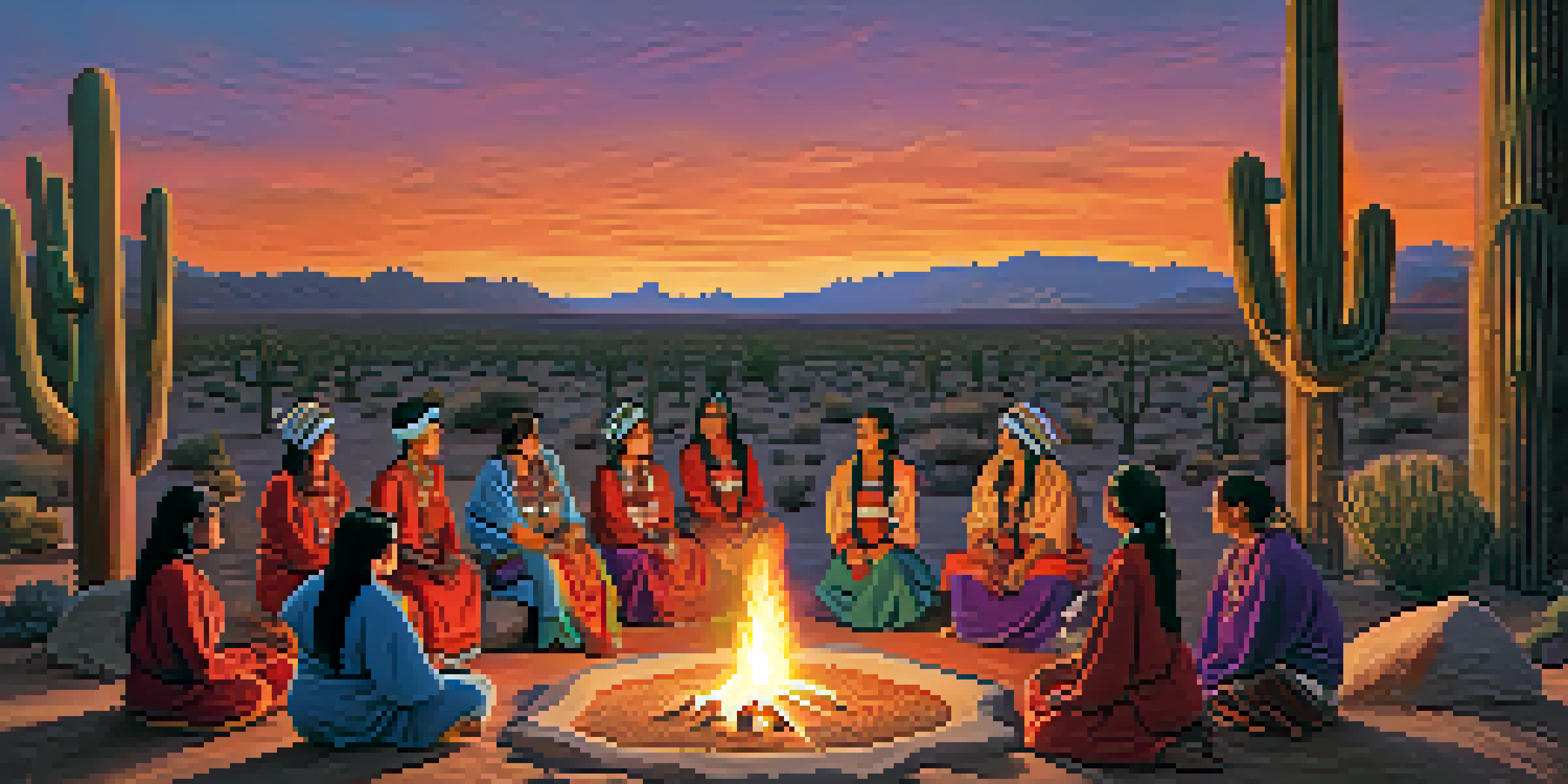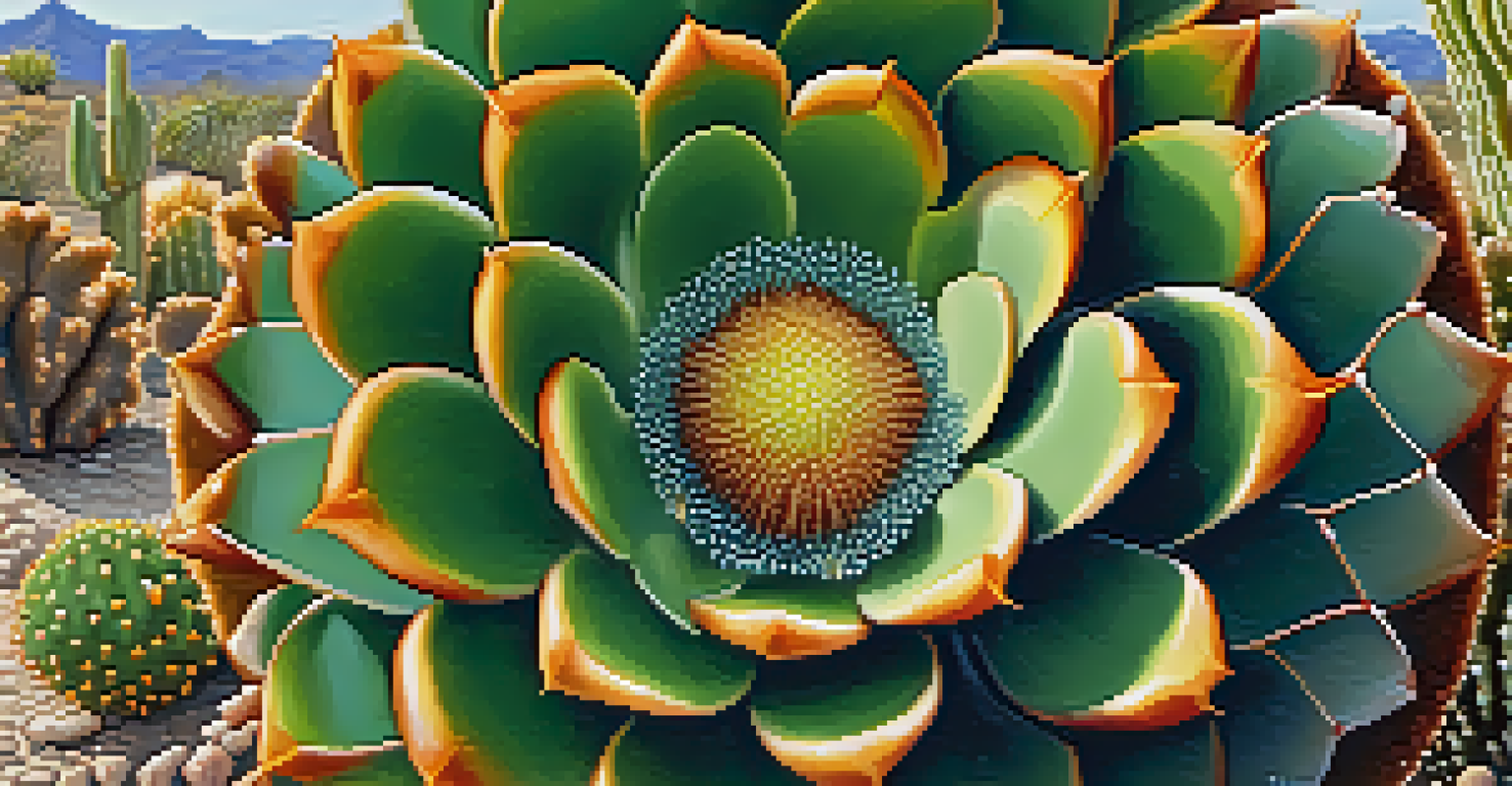Psychedelic Healing: Peyote in Indigenous Medicine

Understanding Peyote: A Sacred Plant in Native Cultures
Peyote, a small cactus native to Mexico and the southern United States, has been used for centuries in various indigenous cultures. It contains mescaline, a psychoactive compound that induces altered states of consciousness. For many Native American tribes, peyote is more than just a plant; it's a sacred tool for spiritual healing and connection with the divine.
Psychedelics are a tool for the mind, body, and spirit, and can help facilitate a deeper understanding of ourselves and our place in the universe.
The use of peyote is deeply woven into the fabric of cultural identity and rituals among tribes such as the Huichol and the Navajo. These groups often gather for ceremonies that involve peyote consumption, aiming to promote healing, personal insight, and community bonding. It's a profound experience that speaks to the heart of indigenous spirituality.
Understanding peyote's role in these cultures helps to appreciate its significance. These ceremonies are not merely about the drug; they are holistic experiences that include music, prayer, and community support, emphasizing the importance of communal healing.
The Historical Context of Peyote Use in Healing
The history of peyote use spans thousands of years, with archaeological evidence suggesting its consumption by indigenous peoples for medicinal and spiritual purposes. This rich history includes the establishment of the Native American Church in the early 20th century, which sought to preserve the use of peyote within a legal framework. This church played a pivotal role in advocating for the rights of indigenous peoples to practice their traditional ceremonies.

In this context, peyote became a symbol of resistance against colonial forces that sought to suppress indigenous practices. The church not only provided a safe space for peyote use but also emphasized its healing properties, both physical and psychological. This movement marked a significant step toward the recognition of indigenous rights and traditions.
Peyote's Sacred Role in Healing
Peyote is a vital spiritual tool for many Native American tribes, used in ceremonies that promote healing and community bonding.
Today, the historical context of peyote use is vital in understanding its current status. As discussions around psychedelics and mental health gain traction, the perspectives of indigenous communities must be at the forefront of this dialogue, honoring their traditions and knowledge.
Psychedelic Healing: The Science Behind Peyote
Recent research into psychedelics has shed light on how substances like peyote can promote healing and personal growth. Mescaline interacts with serotonin receptors in the brain, which can lead to altered perceptions and emotional breakthroughs. Many individuals report profound insights during their experiences, often leading to lasting changes in their lives.
The use of peyote is not merely about the drug; it is about community, connection, and healing.
Furthermore, studies suggest that psychedelics may offer therapeutic benefits for conditions such as PTSD, anxiety, and depression. The ability of peyote to facilitate deep introspection and emotional release is particularly valuable for those struggling with trauma. This growing body of evidence is beginning to bridge the gap between traditional indigenous practices and modern psychotherapy.
Understanding the science behind peyote's effects enhances our appreciation for its role in healing. It highlights the need for respectful dialogue between indigenous knowledge and contemporary science, fostering a more holistic approach to mental health treatment.
The Role of Ceremony in Peyote Healing
Ceremony is a cornerstone of peyote healing practices, providing a structured environment for participants to engage with the plant. During these ceremonies, individuals often find a sense of community and support, which is crucial for emotional healing. The presence of a knowledgeable guide or spiritual leader helps navigate the experience, ensuring safety and respect for the process.
These gatherings typically feature prayers, songs, and storytelling, all of which reinforce the spiritual significance of peyote. This communal aspect not only strengthens bonds among participants but also honors the collective wisdom of their ancestors. It’s a reminder that healing is often a shared journey rather than a solitary one.
Challenges to Indigenous Practices
Indigenous peyote practices face sustainability and legal challenges, threatening both the plant's survival and cultural traditions.
By participating in these ceremonies, individuals can access deeper levels of understanding and connection with themselves and others. The ceremony transforms peyote consumption from a mere act into a sacred experience, amplifying its healing potential.
Challenges Facing Indigenous Peyote Practices Today
Despite its importance, indigenous peyote practices face numerous challenges today. Increased demand for peyote, driven by growing interest in psychedelics, has led to concerns about sustainability and overharvesting. This threatens not only the plant's survival but also the cultural practices that rely on it, as peyote is considered a sacred gift from the earth.
Additionally, legal barriers complicate access to peyote for indigenous communities. Although some progress has been made in legal recognition for ceremonial use, many tribes still grapple with restrictions that hinder their practices. The disconnect between indigenous rights and mainstream psychedelic research further complicates the landscape.
Addressing these challenges requires a collaborative effort that respects the rights of indigenous peoples. Engaging in open dialogue and supporting sustainable practices can help ensure that peyote remains a vital part of indigenous healing traditions while meeting the growing interest in psychedelics.
Lessons from Indigenous Wisdom: Embracing Holistic Healing
Indigenous approaches to healing offer valuable lessons for modern wellness practices. Central to these traditions is the understanding that healing is not just about addressing symptoms but involves nurturing the mind, body, and spirit. This holistic perspective can inspire contemporary approaches to mental health, encouraging a more integrated view of well-being.
By incorporating elements such as community support, ritual, and connection to nature, we can enrich our healing processes. The importance of creating safe spaces for exploration and emotional expression is paramount, reflecting the communal aspects found in peyote ceremonies. Such practices can foster resilience and promote deeper healing.
Integrating Indigenous Wisdom
Embracing indigenous perspectives on holistic healing can enhance modern mental health practices by emphasizing community and spiritual connections.
Ultimately, embracing indigenous wisdom means recognizing the interconnectedness of all aspects of life. It invites us to rethink our approaches to health and healing, emphasizing the importance of community, spirituality, and respect for nature.
The Future of Peyote in Healing and Therapy
As interest in psychedelics continues to grow, the future of peyote as a tool for healing and therapy is both promising and complex. Ongoing research into the therapeutic benefits of psychedelics may pave the way for more recognized and accepted uses of peyote in mental health treatment. However, it is essential to ensure that indigenous voices remain central in this conversation.
The potential for integrating peyote into therapeutic settings raises questions about ethics, respect, and cultural appropriation. It’s crucial to approach this topic with sensitivity, acknowledging the deep cultural significance of peyote for indigenous peoples. Collaborating with these communities can lead to more respectful and effective applications of peyote in healing.

Looking ahead, the future of peyote in healing practices will depend on our ability to foster meaningful partnerships with indigenous cultures. By prioritizing their knowledge and practices, we can create a more inclusive approach to mental health that honors tradition while embracing innovation.